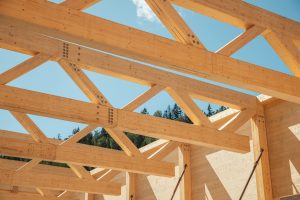
Future Trends in Mass Timber Design
In the ever-changing world of modern architecture, we’re witnessing some exciting trends. While 3D printed buildings and floating structures capture headlines, another trend is steadily gaining traction: mass timber. Recent market research, conducted just two years ago, attempted to peek into the future of the mass timber industry, projecting its growth until 2031. The findings suggest that mass timber is on the rise, especially in residential and industrial construction, outpacing its use in commercial buildings.
Let's delve into these trends shaping the future of mass timber design:
Modular and Prefabricated Buildings
One of the notable trends in architecture is the rise of modular and prefabricated buildings. This involves creating building components, products, and even entire small units that can be easily transported and assembled anywhere, even in remote areas. This trend emerged partly due to the COVID-19 pandemic, as people yearned for quiet getaways in nature. The simplicity of these building elements and their ease of assembly have made small modular houses a global trend.
Biophilic Design
Contemporary structures are increasingly incorporating greenery. This not only enhances the urban environment’s beauty but also plays a vital role in combating the adverse effects of urban heat islands. By adding green elements to facades, rooftops, and balconies, cities can reduce heat and purify the polluted air.

Innovative Mass Timber Materials
Scientists are hard at work developing new materials that complement mass timber construction. One exciting innovation is transparent wood, achieved by replacing a portion of wood’s composition with a polymer. This material improves wood’s thermal properties, weather resistance, fire resistance, and strength, making it even more versatile. Another material in development is a renewable wood composite made from wood waste and recycled plastic. These composite boards could find uses in wall coverings, countertops, and furniture.
Evolution in Business Models
Thanks to advancements in technology like Building Information Modeling (BIM) and virtual reality, along with the complexities of modern construction, it’s now possible to plan and manage a building’s entire life cycle. This integration of design and production processes facilitates prefabrication, allowing for the creation of modular components equipped with facilities, plumbing, and installations. This not only speeds up construction but also makes it more cost-effective, paving the way for more accessible and faster low-carbon construction methods.
In conclusion, mass timber design is set to play a significant role in the future of architecture. These trends are not only changing the way we build, but they are also making buildings more sustainable, efficient, and adaptable to the evolving needs of society.
Share


